I may get commissions for purchases made through links in this post.
You wake up in the morning and sneeze several times. Your head is heavy and your nose itches. Your throat feels like it’s lined with needles as you gulp down your morning coffee en route to work, and dark circles under your eyes look back at you in the rearview mirror.
You use half a box of Kleenex to control your runny nose during the day, and your family can’t stand your constant sniffling throughout the movie that evening.
Or your nose isn’t necessarily runny but you’re dizzy and have headaches, your tongue, palate and cheeks are so swollen that you can’t help biting them.
You don’t have a cold – you’re suffering from allergies.
Does this sound like a typical day for you?
Whether you suffer from occasional seasonal allergies or severe allergic rhinitis, you may be wondering how to alleviate your symptoms and increase your daily comfort.
Waking up congested, groggy, or with a sore throat each morning, taking antihistamine after antihistamine without success, is no way to live.
If you’re doing all you can to alleviate your allergy symptoms (regularly dusting, sweeping, and vacuuming, keeping pets out of the bedroom, avoiding the outdoors during allergy season, and taking suitable allergy medication) and still can’t beat your allergies, it may be time to look to technology for relief.
The two most-used home appliances for allergy relief are air purifiers and dehumidifiers
These devices work to remove allergens from the air in different ways:
- Air purifiers trap smoke, pollen, dust mites, and other allergens and recirculate cleaner air into the room.
- Dehumidifiers, on the other hand, take water out of the air, making it hard for mold, mildew, and dust mites to survive or grow in the first place.
So which one is right for you and your allergies? Let’s take a closer look.
Do you benefit most from an air purifier or a (de)humidifier?
Basically it comes down to this; is the humidity in your home higher than 50%? You probably (and very likely) can benefit tremendously from a dehumidifier.
Does your home have recommended humidity levels? Then you will be best off with an air purifier.
Is the air at home really dry? Typically below 40% and lower, the exact percentage depends on the outside temperature, then you may want to get a humidifier. You will know when the air is too dry when you experience static shocks, nosebleeds, itchy eyes, dry skin and other physical discomfort.
The differences explained
Air Purifiers for allergies
Air purifiers may be helpful if your allergies are spurned on by dust mites, pollen, and pet hair. These often-airborne irritants can be filtered out by a purifier, leaving you with cleaner air to breathe.
Pros:
- Can remove allergens suspended in air.
- Small portable versions are convenient and inexpensive.
- Are effective parts of multi-modal allergy control.
Cons:
- While air filtration is recommended for allergy sufferers by the U.S. Environmental Protection Agency (EPA) and the American Lung Association, it is not a solution by itself.
- Irritants like pet hair and pollen can fall to the floor and stick to furniture, where an air purifier can’t reach them.
- When using an air purifier, you will still need to take measures to reduce irritants in your home, including regularly sweeping, vacuuming, and dusting.
- Air filtration isn’t instant – depending on the capacity and fan size, most air purifiers take 15-20 minutes to clean the air in one room.
- Cannot control humidity and the growth/existence of mold, mildew, dust mites, etc.
- Strict maintenance – cleaning and filter changing – is required.
- Some models emit ozone, which can be a lung irritant.
One of the best-reviewed air purifiers for allergies is the 3-stage filtration Levoit LV-H132.
Keep in mind that if you’re allergic to dust mites you will need dust mite covers (for mattress and pillow) as well. An air purifier alone won’t suffice.
Dehumidifiers for allergies
Dehumidifiers may be helpful if you live in a humid or wet climate. Mold, mildew, dust mites, and other allergens thrive in wet environments.
Reducing the humidity in your home (especially in basements, under sinks, and in crawl spaces) can make it impossible for these allergens to thrive.
If your home smells musty, feels stuffy, or you notice condensation on the windows or toilet bowl, a dehumidifier may be a fitting solution.
Pros:
- Can limit growth and cultivation of humidity-loving allergens
- Relatively low maintenance
Cons:
- Can cause dry conditions that may irritate nasal passages
- Mold can grow in draining basin, so frequent cleaning is required.
- Smaller models may fill up quickly and require frequent dumping of the collected water.
If your allergies are made worse by dry nasal passages, which are more prone to infection and irritation, and less able to properly filter out bacteria, dirt, and allergens, you may actually need to add water to your home’s air, bringing us to another option – a humidifier.
Humidifiers for allergies
A humidifier releases steam or water mist into the air and may help soften and moisten nasal passages, allowing them to comfortably and properly function to ward off allergy-related infection. There are two benefits.
- 1. Breathing in humidified air reduces inflammation and thus helps relieve symptoms such as nasal irritation, congestion, and inflammation of the mucosa caused by allergies and drug treatment side effects.
- 2. Your nasal tissues are better geared to discharging allergens and irritants, thus reducing allergy symptoms.
Hospitals use humidifiers to help lung patients and other patients breathing more easily.
Pros:
- Can be beneficial in a hot, dry climate or a home that is heated most of the year
- Can prevent irritation and infection caused by dry air inhalation
Cons:
- Some allergens thrive in a moist environment, so finding a balance between bone dry and dripping wet is vital.
- When used in already humid environments they can make allergy symptoms worse. Humidity should be kept between 30% and 45-50% – some units come with a useful humidity gauge.
- Regular cleanings are a must to prevent mold growth, and to keep settled allergens from being released into the air with the water.
- Treats peripheral problems but doesn’t rid the air of allergens
You can drastically reduce allergy symptoms caused by house dust mites by maintaining humidity levels at below 50 percent.
Types of allergy relief devices
Once you know which device is best for allergies and how it can affect your allergy symptoms, it’s time to find what type of purifier, dehumidifier, or humidifier to bring into your home.
While talking to a doctor to ultimately determine this is recommended, here are some guidelines to get you started.
Air Purifier Types
1. HEPA (high-efficiency particulate air) filters are made of a very fine fiber that effectively traps 99.97% of particles larger than .3 microns. One HEPA filter usually lasts between 2 and 4 years and is typically the most effective air purifier on its own.
2. Ionizing air filters utilize an electrical field and oppositely charged particles, which attach to pollen and dust and drop to the floor or stick to a wall, where they’re less likely to be inhaled. However, the particles can recirculate into the air later on.
3. Electrostatic air purifiers use charges to attract allergens and deposit them on plates. These devices require involved cleaning and are generally not as effective as HEPA filters.
4. Activated carbon air purifiers use carbon filters to capture pollutants without releasing them back into the air. They work best to trap smoke, odors, and chemical emissions, but are less effective at trapping allergens.
5. UV air purifiers use ultraviolet rays to destroy bacteria and viruses. The most effective UV purifiers for allergy sufferers are ones that also have a HEPA or carbon filter built in, as the UV rays are not effective at destroying allergens on their own.
6. Ozone air purifiers produce ozone to reduce odors and freshen the air, but do not filter dust or pollen unless they are combined with an ionizer or filter. Ozone is a lung irritant and may lead to other health problems.
The best air purifiers for allergies and asthma activated carbon and HEPA filters which allows them to remove a wide range of pollutants including gases, particles, and chemicals.
For most households a device that combines several filtration technologies will be the most effective option.
This popular GermGuardian air purifier offers such a multi modal approach. It utilizes a HEPA filter, UV-C and odor reduction to clean indoor air.
Dehumidifier Types
1. Mechanical or refrigeration dehumidifiers pull air in through a fan and pass it over cooled and heated coils. The moisture from the air condenses and falls into an attached drainage system, and the dry air is expelled. These devices sometimes produce heat as a byproduct, and do not run well in cold temperatures. These are the most common and generally most effective.
2. Absorption or desiccant dehumidifiers pass air through a rotating water-absorbing material and recirculate dry air back into the room. The wet part of the absorbent material is then heated in order to dry. These devices are often lighter than mechanical dehumidifiers and are suited well to work in cooler temperatures.
3. Air conditioners act as dehumidifiers, too, by cooling and removing moisture.
4. Thermoelectric dehumidifiers use a Peltier pump that cools a plate and condenses water vapor. These devices have no moving parts and are quieter than other types, but may ice (like the inside of a mini fridge) and aren’t proven to perform as well as others.
5. Ionic membrane dehumidifiers remove air through electrolysis, separating hydrogen and oxygen. There are no moving parts and no liquid water. These devices are generally used in small spaces to protect museum specimens, electrical equipment, or medical devices, instead of homes.
Which dehumidifier to choose largely depends on the capacity. For mild humidity problems in a small rooms such as a bathroom or a modest-sized bedroom a small peltier dehumidifier such as the bestselling Eva Dry EDV 1100 will work.
Humidifier types
1. Evaporative humidifiers (or cool moisture or wick humidifiers) use a porous wick to absorb water; then, a fan blows through the wick, dispersing water into the air. These humidifiers are dependent on the humidity of the room – as the humidity rises, their output decreases, and visa versa. If the wick is not dried and cleaned properly, it can mold and/or become saturated with mineral deposits and bacteria.
These are the most commonly used humidifiers.
2. Steam/mist humidifiers can either produce warm or cool water vapor.These units boil water and produce clean steam, which is either emitted directly, or cooled and then emitted. Boiling the water requires more energy than other models, and can sometimes lead to melting or leaking.They do require regular cleaning, as minerals tend to collect around the heating element.
3. Ultrasonic humidifiers use high frequency waves to create and dispel water droplets quietly, sometimes with the help of a small fan. These units require clean starting water and meticulous cleaning to keep bacteria from being dispersed, and a fine dust of minerals may appear on room surfaces, due to the lack of a filter.
4. Impeller humidifiers utilize a rotating disk to pass water through a diffuser. The diffuser then disperses fine water droplets into the air. This type of humidifier has no filter, so it requires clean water, needs to be cleaned regularly, and may leave mineral deposits on nearby furniture.
So which is best for allergies? A humidifier, dehumidifier, or air purifier?
As we’ve seen this depends on your situation and type of allergy. If your home’s atmosphere is too humid you may want to opt for a dehumidifier. By reducing the humidity to below 50% allergy causing dust mites and mold will wither.
The key is to create a balance in the ideal relative humidity in your home.
- Low relative humidity makes it hard for mold and dust mites to survive and can lower indoor air pollution.
- Higher humidity levels feels more comfortable to your nasal and throat passage tissues.
Ensure a relative humidity in your home between 40 and 48 percent. This will reduce dust mite colonies while creating fairly moist air that is comfortable to breathe in and doesn’t dry out your skin.
In order to be aware of your home’s humidity levels you can use a hygrometer. Many (de)humidifiers feature a hygrometer.
Related reads:
How To Get Rid Of Dry Indoor Air- 27 Clever Tips To Humidify Your Home
10 Reasons Why Ideal Home Humidity Levels Prevent Sickness and High Costs

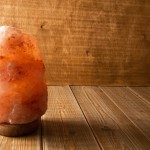
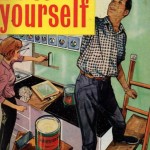





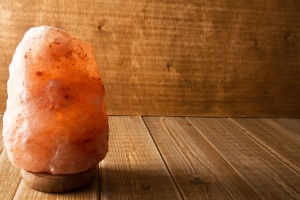


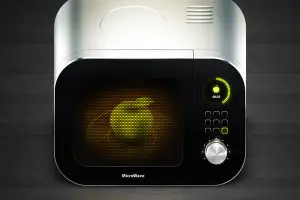

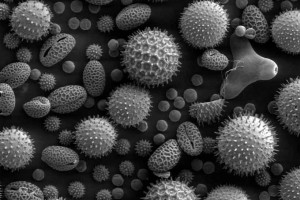









Do you have a water leak or moisture coming in some where in your home? Another problem could be that the Buyers may be frightened by the high mold spore count and back out of the contract. Plz at more http://www.moldbustersllc.com/
Great article. Air Purifiers and Dehumidifiers have pros and cons of their own. It is important to list down our needs and choose accordingly.
There are many people suffering from respiratory problems, usually derived from allergies and asthma. Such reactions and diseases are often caused by the environment. Air purifier helps people to overcome these problems to a great extent.
The blog is really informative, thanks for sharing.